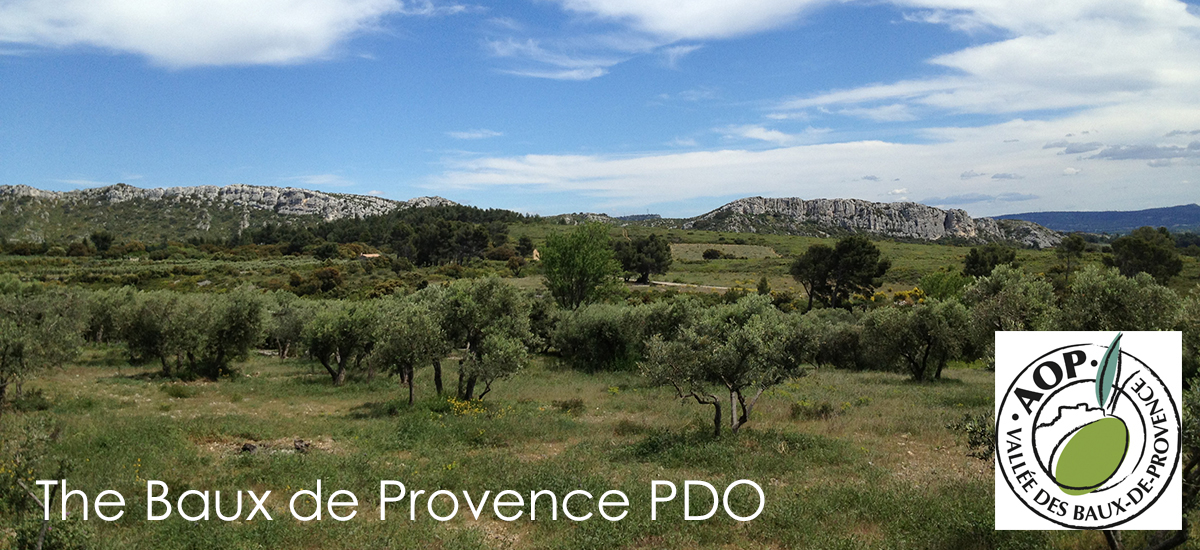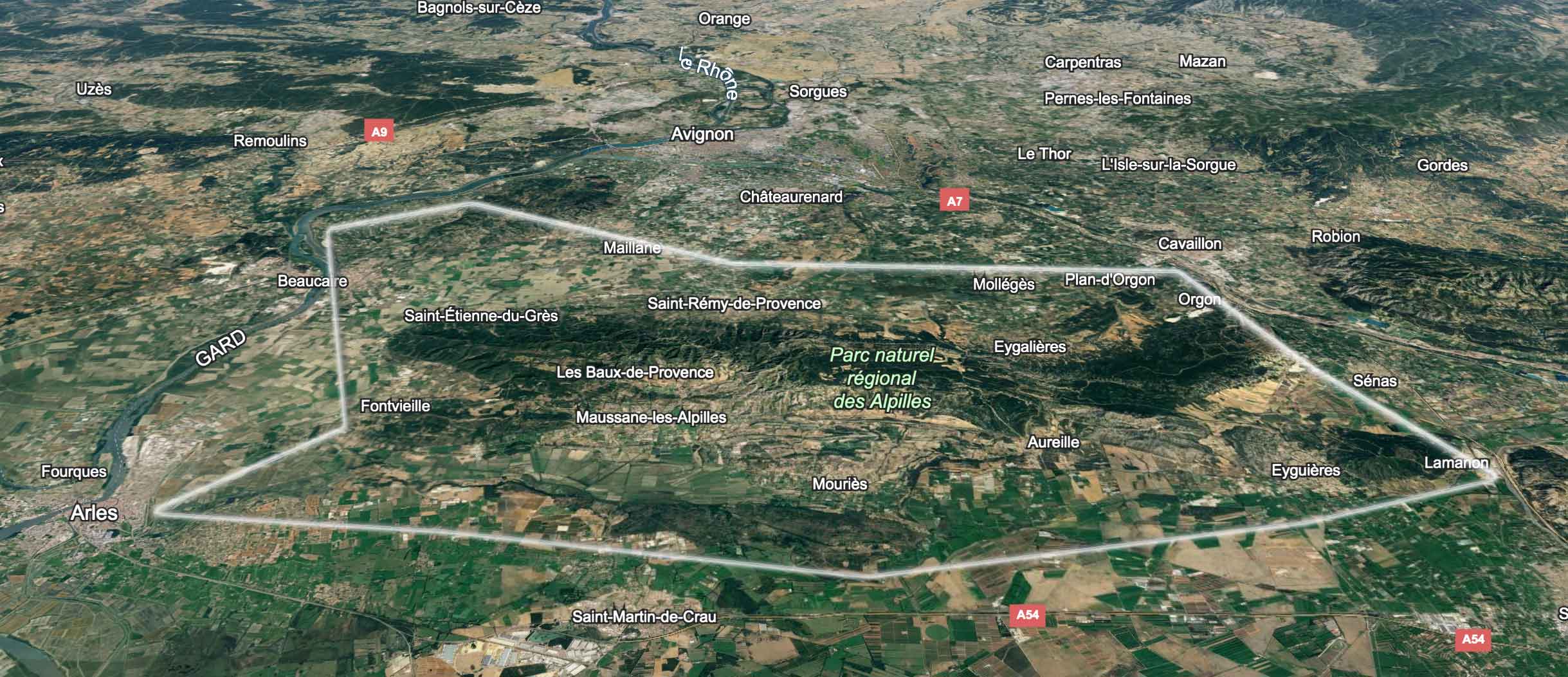The Protected Designation of Origin (PDO) Les Baux-de-Provence olive oil is produced exclusively within the boundaries of the Alpilles massif, stretching from Lamanon in the southeast to Arles in the southwest, and from Orgon in the northeast to Saint-Étienne-du-Grès in the northwest.
The term ‘Protected Designation of Origin’ (PDO), granted by the National Institute of Origin and Quality and the European Commission, guarantees both the outstanding quality of the product and the authenticity of its geographical origin. It is a strict certification, awarded only after thorough testing, continuous checks throughout the production process, and multiple taste evaluations.
The entire process, from harvesting the olives to producing the oil, takes place within the designated geographical area, which spans 17 villages in the Bouches-du-Rhône. This region, characterized by landscapes dotted with olive groves, includes: Arles, Aureille, Les Baux-de-Provence, Eygalières, Eyguières, Fontvieille, Lamanon, Mas-Blanc-des-Alpilles, Maussane-les-Alpilles, Mouriès, Le Paradou, Saint-Martin-de-Crau, Orgon, Saint-Étienne-du-Grès, Saint-Rémy-de-Provence, Sénas, and Tarascon.
Key Characteristics of Baux-de-Provence PDO Olive Oil
The olive oil of the Baux-de-Provence Valley stands out for its distinctive aromas, typically including at least two notes such as freshly cut grass, apple, almond, raw artichoke, fresh hazelnut, or tomato leaf. It has a balanced profile, with moderate bitterness and pungency. According to the International Olive Council (IOC) scale, its bitterness does not exceed 3, while its pungency, known as ‘ardence’, ranges from 1 to 3. The oleic acid content is no higher than 0.8 grams per 100 grams.
The oil named “ripe olives” is sweet and smooth, with aromas (at least 2) such as candied olives, black olives, olive paste, cocoa, mushroom, cooked artichoke, truffle or sourdough bread. Aromas of cooked pear, musty or metal are excluded. It has a bitterness of 1 or less and an ardence of 2 or less on the IOC scale, with a maximum oleic acid content of 1.5 grams per 100 grams.
The Baux-de-Provence PDO’s guidelines
The Baux-de-Provence PDO olive oils come to 80% of olives from the varieties Salonenque, Aglandau (also called Beruguette), Grossane, Verdale des Bouches-du-Rhône. 2 of these varieties must be present in the oil. The picholine variety is allowed up to a maximum of 20%. Some local varieties are also allowed in a maximum proportion of 15%.
Since 1997, each olive tree must be planted with a minimum area of 24 square meters, and trees must be spaced at least 4 meters apart.
The trees are pruned every two years and may be watered during the growing season, up until the annual harvest date set for the Protected Designation of Origin. Only olive oil made from trees that have been growing on the plot for at least five years can be certified as Les Baux-de-Provence PDO.
The start date of the harvest is determined each year by the INAO. Olives are picked directly from the tree or using fillets. The installation of nets year-round, as can be seen in Corsica, is prohibited. Olives that have fallen to the ground cannot be used and must be kept separate from the olives eligible for the designation of origin. The olives are stored in crates or palox before being sent to the mills no later than 48 hours after harvest.
Regardless of their intended use, the olive harvest must not exceed 10 tons per hectare. This yield is calculated based on all the plots listed on the farm that produce olives intended for the ‘Olive Oil of Baux-de-Provence’, ‘Broken Olives of Baux-de-Provence’, and ‘Black Olives of Baux-de-Provence’ Protected Designations of Origin.







